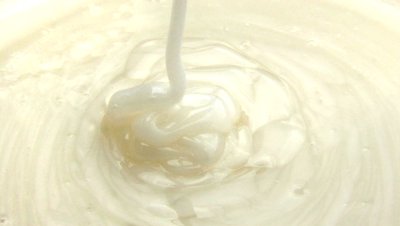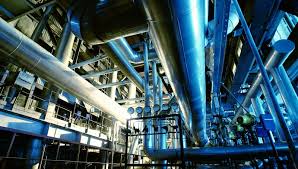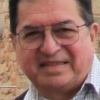We are using a Vertical Multistage centrifugal Pump for pumping Water 1200 LPH at 14 Bar Pressure. The inlet/outlet size of Pump Flange is 32 NB. We have drilled a hole in Blind Flange of 32 NB, tapped it according to 1/2" BSP Thread . This is because our entire piping is of 1/2" size.
Kindly comment that is it right to do it in this manner or should we take a certain minimum length (32 NB Pipe) before reducing it to 1/2".
|
|
Vertical Multistage Centrifugal Pump
Started by Guest_jaidutt_*, Sep 10 2004 05:38 AM
4 replies to this topic
Share this topic:
#1
 Guest_jaidutt_*
Guest_jaidutt_*
Posted 10 September 2004 - 05:38 AM
#2

Posted 10 September 2004 - 07:44 PM
jaidutt:
I don't know where you are located at, but you have a problem with all the different engineering units you employ. You start off in metric and then cite british standards and then go to 1/2" pipe. All for what appears to be 5.28 gpm of water flow.
I don't know what 32 NB Pipe is, but I suspect it is metric standard pipe that is bigger than 1/2" in nominal diameter. I also presume you mean british pipe and not USA pipe. There is a difference, I believe. Any way, for such a small flow you're going to have a nice 5.5 ft/sec velocity and a head loss of approx. 26 ft head per 100 ft of 1/2" pipe length.
I think you want a blessing on using a blind flange drilled as a reducer to accept the 1/2" pipe. I don't see any problem with that - as long as you can accept the entrance pressure drop into the 1/2" pipe. I don't know how critical your pressure drop is and how much you can tolerate. At 200 psig I would presume you can tolerate it. I hope this answers your query.
Art Montemayor
I don't know where you are located at, but you have a problem with all the different engineering units you employ. You start off in metric and then cite british standards and then go to 1/2" pipe. All for what appears to be 5.28 gpm of water flow.
I don't know what 32 NB Pipe is, but I suspect it is metric standard pipe that is bigger than 1/2" in nominal diameter. I also presume you mean british pipe and not USA pipe. There is a difference, I believe. Any way, for such a small flow you're going to have a nice 5.5 ft/sec velocity and a head loss of approx. 26 ft head per 100 ft of 1/2" pipe length.
I think you want a blessing on using a blind flange drilled as a reducer to accept the 1/2" pipe. I don't see any problem with that - as long as you can accept the entrance pressure drop into the 1/2" pipe. I don't know how critical your pressure drop is and how much you can tolerate. At 200 psig I would presume you can tolerate it. I hope this answers your query.
Art Montemayor
#3
 Guest_jaidutt_*
Guest_jaidutt_*
Posted 12 September 2004 - 11:49 PM
The clarifications for the above are 32 NB (1.25" Normal Bore), 1/2" BSP is the threading connection.
Is it advisable that we expand our line size fron 1/2" (OD) to 1.25" (ID) and thats also just at Pump inlet point, and immediately reduce our line size from 1.25" (ID) to 1/2" (OD) at the pump outlet.
We don't have any issue regarding Pressure drop, while in a span of 6 months operation (with such kind of setup for handeling water < 1 NTU Turbidity) we have lost our couple of pumps. On the other hand with the same water quality same Model & Make pump is working since past more than 2 Years, but the inlet and outlet piping is same (i.e.1.25") as of pump ports.
Myself is jaidutt, I am a diploma Engineer from India, working in the field of RO Based Water Treatment Systems.
Please let me have your feedback on this. Further any clarification or information is rrequired please do let me know.
Is it advisable that we expand our line size fron 1/2" (OD) to 1.25" (ID) and thats also just at Pump inlet point, and immediately reduce our line size from 1.25" (ID) to 1/2" (OD) at the pump outlet.
We don't have any issue regarding Pressure drop, while in a span of 6 months operation (with such kind of setup for handeling water < 1 NTU Turbidity) we have lost our couple of pumps. On the other hand with the same water quality same Model & Make pump is working since past more than 2 Years, but the inlet and outlet piping is same (i.e.1.25") as of pump ports.
Myself is jaidutt, I am a diploma Engineer from India, working in the field of RO Based Water Treatment Systems.
Please let me have your feedback on this. Further any clarification or information is rrequired please do let me know.
#4

Posted 13 September 2004 - 10:12 AM
jaidutt:
As I initially stated, there is nothing wrong with reducing your 1-1/2" pump discharge nozzle down to 1/2" by using a drilled & tapped blind flange. The 5 gpm capacity you cite should give a minimal % pressure drop of the 200 psig you have available at that point.
If you are concerned with aesthetics, turbulence, and strength of the joint then I would employ an engineered 1-1/2" x 1/2" welded concentric reducer. This is the manner I would have designed the connection from the outset. However, if you want a cheaper connection, then the drilled blind flange should do the job.
A 1/2" pipe is very appropriate for a small flow of 5 gpm. However, if your pumping rate is higher, then you should use a larger size discharge pipe. 1,200 liters/hr = 5.28 gpm and the 1/2" pipe is suited to this flow with the pressure drop of 26 ft of head per 100 ft of pipe. You don't state how long your 1/2" discharge is, so I can't tell how much pressure drop is developed overall.
Art Montemayor
Spring, TX
As I initially stated, there is nothing wrong with reducing your 1-1/2" pump discharge nozzle down to 1/2" by using a drilled & tapped blind flange. The 5 gpm capacity you cite should give a minimal % pressure drop of the 200 psig you have available at that point.
If you are concerned with aesthetics, turbulence, and strength of the joint then I would employ an engineered 1-1/2" x 1/2" welded concentric reducer. This is the manner I would have designed the connection from the outset. However, if you want a cheaper connection, then the drilled blind flange should do the job.
A 1/2" pipe is very appropriate for a small flow of 5 gpm. However, if your pumping rate is higher, then you should use a larger size discharge pipe. 1,200 liters/hr = 5.28 gpm and the 1/2" pipe is suited to this flow with the pressure drop of 26 ft of head per 100 ft of pipe. You don't state how long your 1/2" discharge is, so I can't tell how much pressure drop is developed overall.
Art Montemayor
Spring, TX
#5
 Guest_Shaun_*
Guest_Shaun_*
Posted 17 September 2004 - 03:22 PM
jaidutt,
If you have lost some pumps with this configuration, I would focus on the suction piping rather than the discharge.
First off you should have a look at the NPSH. You haven't stated what kind of pump this is, but if it is reciprocating (piston) you need to consider the accelleration head when looking at NPSH.
The other issue you could have is that if the inlet increase in size is right at the pump you could have turbulence that is causing problems. This should be less of an issue if you move the size increase a minimum of 5 pipe diameters away.
On the discharge there is not as much concern, unless you are having pulsation problems (which only relates to reciprocating pumps).
The reason I'm focusing on this, is that small reciprocating simplex pumps are the worst for having puslation related and NPSH problems. You haven't described the type of pump failures you've had, does it seem consistant with cavitation or vibration damage?
If you have lost some pumps with this configuration, I would focus on the suction piping rather than the discharge.
First off you should have a look at the NPSH. You haven't stated what kind of pump this is, but if it is reciprocating (piston) you need to consider the accelleration head when looking at NPSH.
The other issue you could have is that if the inlet increase in size is right at the pump you could have turbulence that is causing problems. This should be less of an issue if you move the size increase a minimum of 5 pipe diameters away.
On the discharge there is not as much concern, unless you are having pulsation problems (which only relates to reciprocating pumps).
The reason I'm focusing on this, is that small reciprocating simplex pumps are the worst for having puslation related and NPSH problems. You haven't described the type of pump failures you've had, does it seem consistant with cavitation or vibration damage?
Similar Topics
Centrifugal Pump In Recycle Mode: Constant Power Consumption But FluctStarted by Guest_Kakka_* , 23 Jan 2025 |
|

|
||
Need Help Understanding Increased Power Consumption In Injection PumpStarted by Guest_Kakka_* , 21 Feb 2025 |
|

|
||
Improving Safety By Re-Routing Priming Vent Line In Centrifugal Pump HStarted by Guest_Srinivas Agastheeswaran_* , 31 Jan 2025 |
|

|
||
Centrifugal PumpsStarted by Guest_panoska_* , 01 Feb 2025 |
|

|
||
Vertical Ko Drum SizingStarted by Guest_alexzo1990_* , 27 Jan 2025 |
|

|

 FB
FB







